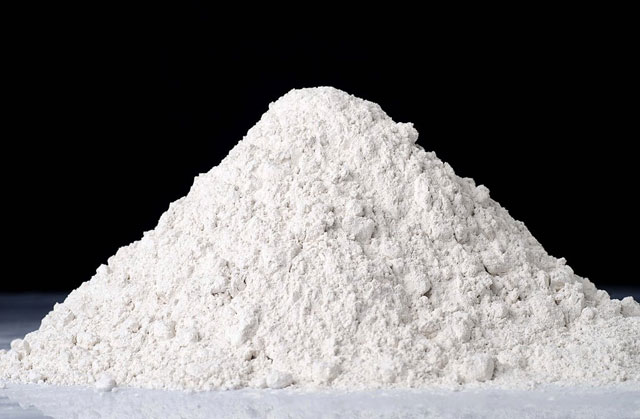Thousands of years ago, Calcium carbonate (CaCO3) was widely used by humans in life and production. For the plastic industry, CaCO3 filler is a great solution to help manufacturers optimize costs, improve competitiveness and improve product quality. Let's learn about Caco3 filler and its benefits in plastic production right here.
1. What is Calcium carbonate?
1.1. What is Calcium carbonate?
CaCO3 (calcium carbonate) is a component found in natural organisms such as bones and shells of animals (shellfish, snails, pearls, or eggshells). An estimated 5% of the earth's crust is CaCO3 in various forms.
The molecular weight of calcium carbonate is 100.0869 g/mol. Besides, calcium carbonate's melting point is around 825 °C (as aragonite) and 1339 °C (as calcite).

Source: https://yenbai.gov.vn
1.2. How to make CaCO3
Currently, CaCO3 is mainly extracted from calcite, limestone, or impurity form and produces minerals such as dolomite. Out of them, limestone ore (a sedimentary rock usually formed near waterfalls or streams) is considered the most abundant resource. Besides, minerals and rocks such as chalk, marble, limestone, otufa and travertine are also some other sources of CaCO3.
.jpg)
From the limestone quarried, manufacturers will grind it into a fine powder, then classify it by particle size (crushed calcium carbonate – GCC). The higher the quality of the quarry, the higher the purity of the CaCO3 powder. Ultra-pure CaCO3 is known as finely ground calcium carbonate (FGCC).
Another way to produce CaCO3 is to heat raw calcium carbonate to obtain calcium oxide, and then add water to form calcium hydroxide (lime milk). After separating the insoluble particles, we get lime milk carbonated with CO2. CO2 will precipitate calcium carbonate, then calcium carbonate is filtered, dried and ground into powder. This product is called precipitated calcium carbonate (PCC). PCC is generally more expensive than GCC of equivalent grain size.
1.3. Application of CaCO3
- Construction: Production of building stone, marble, cement or lime production.
- Agriculture: As an important component in the production of animal feed.
- Health: As a calcium supplement, an anti-acid.
- Environment: Support for water treatment. CaCO3 absorbs toxic gases accumulated at the bottom of ponds/lakes, stabilizes water color, limits scum, cleans water, increases dissolved oxygen (DO) in water, limits pathogens and harmful bacteria in water. …
- Production of glass, glass:
- Manufacture of ceramics: As a whitener and as a flow aid in enamel.
- Paint industry: Helps to increase the opacity of the coating process. Improve environmental corrosion resistance and improve product viscosity.
- Power cords and cables: Helps increase the resistance of most cable sheaths.
Related
- Top 20 reliable plastic additives companies in 2022
- Types of plastic extrusion and its manufacturing process
2. What is CaCO3 filler?
2.1. What is CaCO3 filler?
CaCO3 plastic filler, also known as Taical granules, is an additive used in the process of forming plastic products, with the main ingredients are CaCO3 and primary resin. In other words, CaCO3 acts as the main component of CaCO3 filler. In addition, the plastic filler also includes a substrate of primary plastic particles such as LLDPE, HDPE, etc., and some other additives.
2.2. Why calcium carbonate used in plastic industry
Currently, people use CaCO3 filler in plastic production because of the following benefits:
- Limestone has a natural white color, so CaCO3 fillers give the finished product a high whiteness without the use of bleach, whiteners or colorants.
- CaCO3 is abundant in nature, easy to exploit, and cheap.
- Plastic filler will partially replace primary plastic, thus helping to reduce production costs (because the price of plastic filler is cheaper than the price of primary plastic).
CaCO3 filler also has good thermal conductivity, which saves energy and shortens the production process.
- Environmentally friendly, can prevent evaporation and reduce the temperature in the factory
- CaCO3 filler helps to increase some properties of the finished product such as hardness, surface gloss, flexural resistance, impact resistance, etc.
- Easily mixed with additives and colorants
3. Where to buy CaCO3 filler?
In Vietnam, limestone is famous for its abundant reserves, rare quality, and has been appreciated by French geologists for more than 100 years. Exploiting limestone ridges in Yen Bai, Nghe An…, we bring these pure products to crystallize in each product bearing the Europlas brand. Europe Plastics Joint Stock Company is currently the world's largest supplier of filler masterbatch with a capacity of 600,000 tons/year and has been present in over 85+ countries. During 15 years of development, EuP is always confident in its commitment to the quality of its products and services.
For more information, please fill out the form or contact us directly via email/phone number.